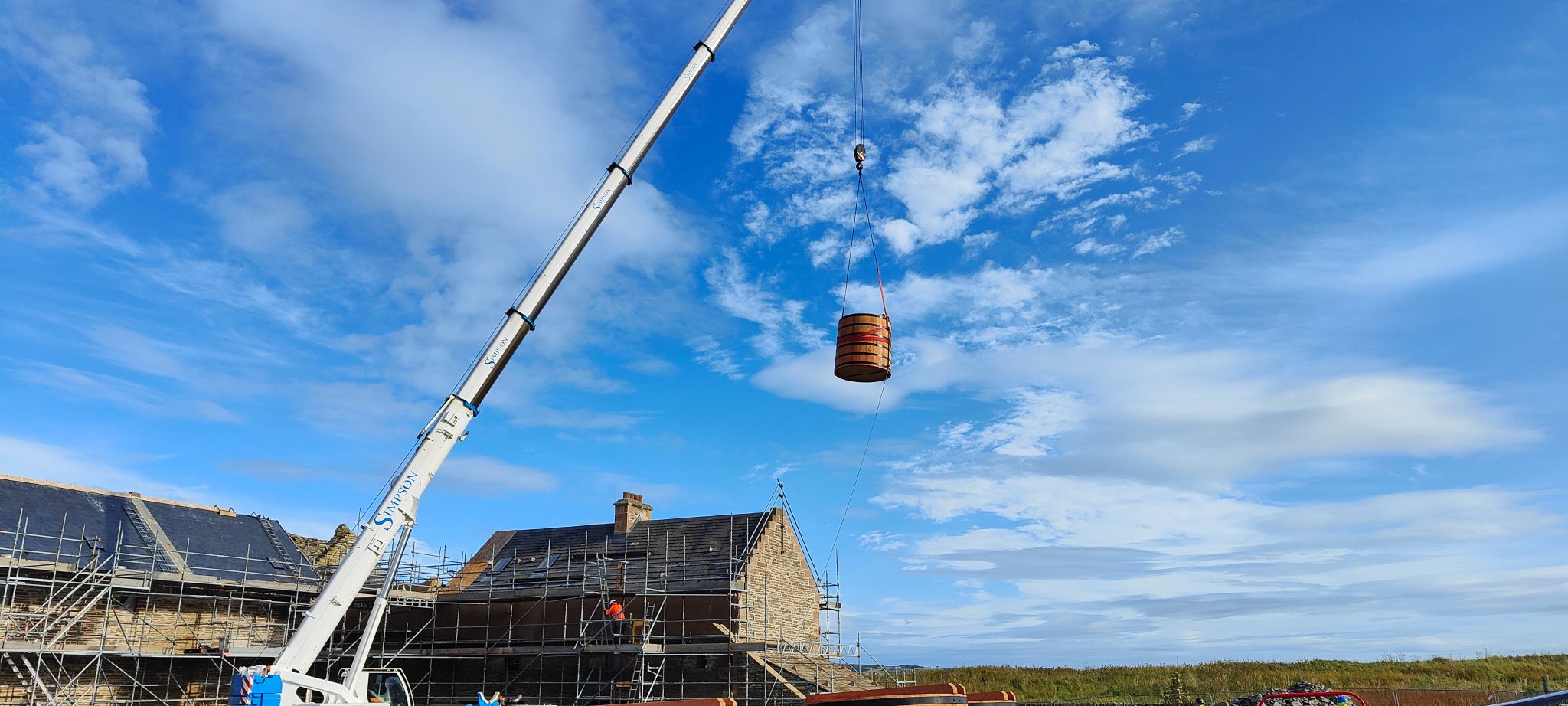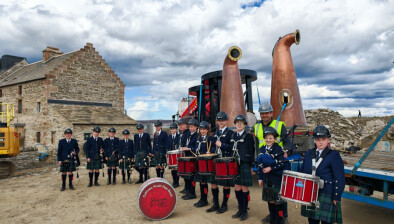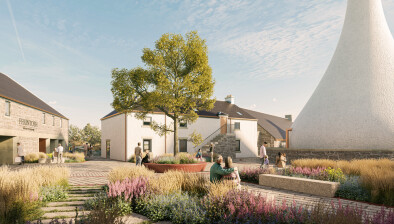Castletown Mill restoration reaches milestone

The endangered 19th-century Castletown Mill in Caithness has marked a significant milestone in its transformation, becoming wind and watertight for the first time in decades.
The historic grain mill, located near the Castle of Mey, has long been disused and dangerous, despite it being a prominent landmark at the edge of the town. King Charles has previously expressed a desire for its preservation.
The building is being converted into a new distillery by local company Dunnet Bay Distillers for the production of Stannergill Whisky. The fresh addition will join Dunnet Bay’s renowned portfolio, which already includes Rock Rose Gin and Holy Grass Vodka. The first releases of whisky have already sold out, emphasising the interest in the project. Each of the bottles in the series celebrates the place and the people of the area.
The project has been designed by Organic Architects, specialists in distillery projects, who have faithfully planned the restoration project, consulting with Historic Environment Scotland and Highland Council, ensuring it will serve as a local landmark for generations to come.
The construction, which began in April 2023, is progressing well, with the distillery set to become a major destination on the Highland whisky trail, complete with a custom visitor facility along the North Coast 500.
The new copper pot stills will sit in the large volume of the main building, in front of large windows giving a view out to the sea. Traditional grain elevators are being rebuilt in their original position. Timber trusses have been restored, the Caithness stone walls repointed, and much of the building is now reaching wind and watertight position. The roofs are being clad once more in Caithness slabs, in keeping with the original construction, using materials sourced from local quarries.
Andrea Wise, founder and director at Organic Architects, commented: “Castletown Mill has reached an important stage in its renovation. Having lain unused for decades, it was likely to be lost unless action was taken to refurbish the building.
“The goal is to revive the building, not only as a whisky distillery, but as a vibrant visitor attraction on the NC500. By repurposing landmark buildings like Castletown Mill, the cultural heritage of the area is preserved, whilst creating new opportunities for business and the community in general.
“It is difficult to find a new user for such a large volume as a flour mill, however a whisky distillery needs space for large vessels such as washbacks and copper pot stills. This turns out to be the perfect use for this building.”
The distillery currently employs 16 people in the original location just a few miles north along the bay. The new production facility and visitor centre is planned to open next summer, creating more local jobs in the visitor facility, in the bistro and shop.
Martin Murray, from Dunnet Bay Distillers, added: “With local memories tied to the building, we are excited to breathe new life into this place.
“We are collaborating with the John O’Groats Mill Trust and Nucleus: The Nuclear and Caithness Archive to research, interpret, and promote the milling heritage of Caithness.
“Our aim is to revitalise Castletown Mill as both a whisky distillery producing a unique Caithness whisky that reflects its origins and as a visitor centre. The operation of this unique site aims to boost the local economy, create long-term employment opportunities, and improve environmental performance.”














